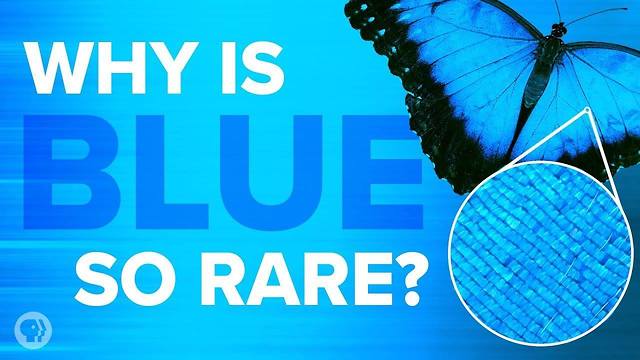Premium Only Content

Here Is Why Blue Is Such A Rare Color In Nature
Among living things, the color blue is oddly rare. Blue rocks, blue sky, blue water, sure. But blue animals? They are few and far between. In this video, we'll look at some very cool butterflies with Bob Robbins, Ph.D. from Smithsonian's National Museum of Natural History to help us learn how living things make blue, and why this beautiful hue is so rare in nature.
To understand how blue works, we need to take a look at the most colorful animals of them all - butterflies. If you didn’t already know, butterflies have evolved from moths to be able to frolic in the sun. Their wings have developed lots of different colors, ranging from earthy browns to the most spectacular blue colors. The natural occurring colors in our bodies actually come from the food that we are eating and they are usually browns, reds and yellows, so how come some people have blue eyes?
The scientific explanation is that, well, they don’t. There is no real blue color in nature, rather it’s all physics. The blue hue that we are constantly mesmerised by is nothing more than refraction of blue light. The animals that have been able to produce blue coloring for their skin do it by having a complex skin structure on those parts of their body. The wings of the butterflies have the tiniest ridges where the light is refracted and the only colored light being able to deflect is the blue light. Everything else is absorbed at the bottom of the wing and that is why nature is the greatest scientist of them all!
-
 5:02
5:02
PBS_ItsOKToBeSmart
5 years agoWhy Are Some People Left-Handed?
5242 -
 0:26
0:26
Nature Lovers
4 years agoButterfly Color Nature Fly Animal 🌴🌴🌴🌴
72 -
 0:07
0:07
1Newberry7
4 years agoColor Blue, Beard
311 -
 6:05
6:05
Picasso's Dream
4 years agoThe Color Blue (Official Video)
29 -
 0:21
0:21
Plan9ne
4 years agoCorruption is the color blue
51 -
 2:59:05
2:59:05
Wendy Bell Radio
8 hours agoAmerica Is Back
64.2K94 -
 1:45:57
1:45:57
Tucker Carlson
5 days agoAaron Siri: Everything You Should Know About the Polio Vaccine, & Its Link to the Abortion Industry
98.1K142 -
 1:46:38
1:46:38
Real Coffee With Scott Adams
3 hours agoEpisode 2707 CWSA 01/01/25
18.5K12 -
 14:06
14:06
Stephen Gardner
3 hours ago🔥Trump FIGHTS BACK: Biden White House BUSTED in MAJOR SCANDAL!
14.6K99 -
 6:08:13
6:08:13
MissesMaam
15 hours agoCelebrating New Years 2025 💚✨
69.1K16